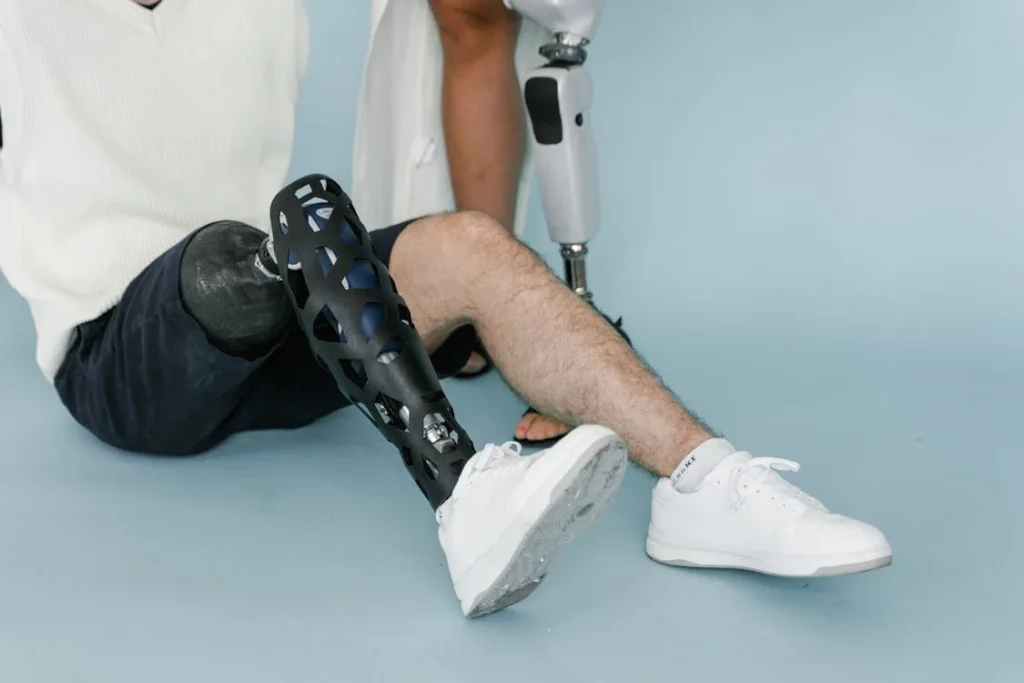Losing a part of the foot can have a big impact on movement, balance, and overall comfort. Every step we take depends on the foot’s ability to support weight, absorb shock, and push off the ground smoothly. When a part of the foot is missing, walking feels different, and everyday activities can become challenging.
Partial foot prosthetics are designed to bring back stability and help users walk with ease. They provide support, reduce strain on the rest of the body, and prevent long-term issues like knee or hip pain. Choosing the right prosthetic is not just about restoring appearance—it is about improving movement, preventing discomfort, and making daily life easier.
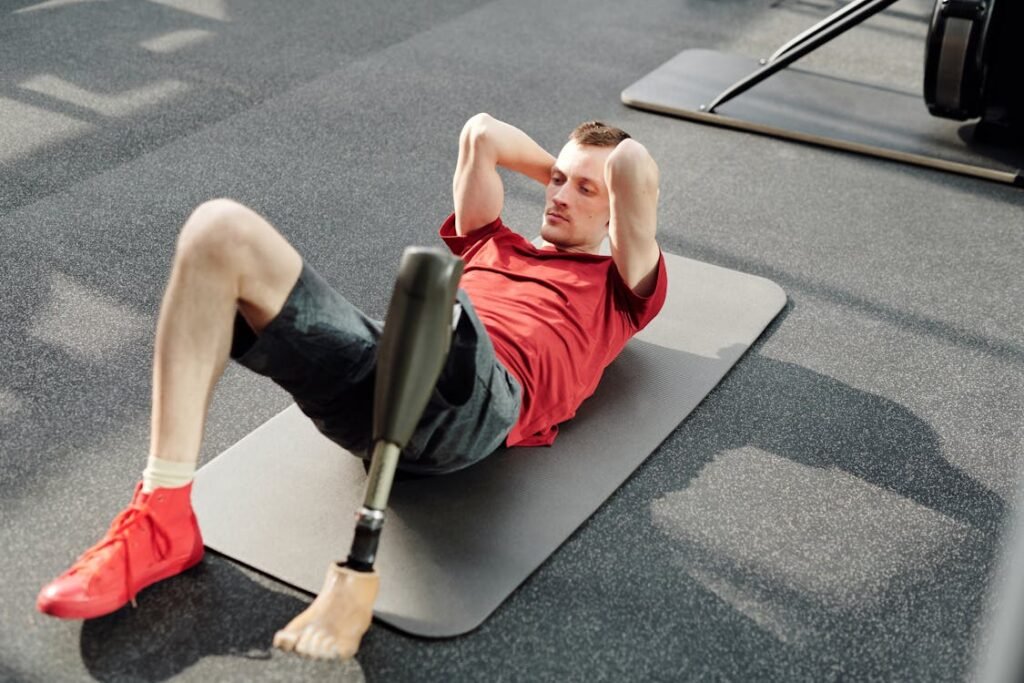
Understanding Partial Foot Prosthetics
Partial foot prosthetics are designed for individuals who have lost part of their foot due to injury, illness, or medical conditions like diabetes.
The foot plays a crucial role in maintaining balance, absorbing shock, and propelling the body forward. When even a small part of the foot is missing, the way a person walks changes.
Without proper support, the remaining foot may experience excess pressure, leading to pain, instability, and difficulty with movement.
How Partial Foot Prosthetics Work
A partial foot prosthesis restores lost function by filling in the missing section of the foot and providing the necessary support for a natural walking motion. It redistributes weight evenly, preventing pressure sores and discomfort.
Some prosthetics extend slightly above the ankle for added stability, while others fit snugly within a shoe to blend seamlessly with the remaining foot.
Modern partial foot prosthetics are designed using advanced materials that balance durability with comfort. Silicone and lightweight carbon fiber are commonly used to provide flexibility while ensuring the prosthetic remains strong enough for daily activities.
Some designs incorporate energy-returning technology, which helps absorb impact and provides a push-off effect similar to a natural foot.
Improving Balance and Stability
One of the main challenges after a partial foot amputation is maintaining balance. The foot acts as the body’s natural stabilizer, adjusting with every step to keep a person steady.
When part of the foot is missing, it disrupts the body’s ability to balance properly. This can make simple movements, such as standing on one leg or walking on uneven surfaces, more difficult.
A well-fitted prosthesis helps restore this balance by mimicking the function of the missing foot section. By providing a stable base of support, it reduces the chances of tripping or falling.
Many individuals find that after adapting to their prosthetic, they can walk with confidence, even on challenging surfaces like gravel, grass, or inclined pathways.
Restoring Natural Walking Motion
Walking is a complex process that involves multiple joints and muscles working together. When part of the foot is missing, the body tries to compensate by adjusting movement patterns.
This often leads to an uneven gait, which can cause strain on the knees, hips, and lower back over time.
A partial foot prosthesis helps restore a more natural walking pattern by supporting the push-off phase of movement. Since the toes and front of the foot play a major role in propelling the body forward, prosthetic designs often include flexible forefoot sections to recreate this function.
With proper rehabilitation, users can regain a smoother, more efficient gait, reducing stress on other parts of the body.
Enhancing Comfort for Long-Term Use
Comfort is a key factor in making a prosthetic successful. If a prosthesis is too rigid or poorly fitted, it can cause pain and skin irritation. A well-designed prosthetic should feel like a natural extension of the foot, allowing users to walk comfortably for extended periods.
Innovations in prosthetic technology have led to custom-molded designs that conform to the unique shape of the residual foot. Some prosthetics include cushioning layers that reduce impact forces and prevent friction-related issues.
Regular adjustments may be needed to maintain an ideal fit, ensuring long-term comfort and functionality.
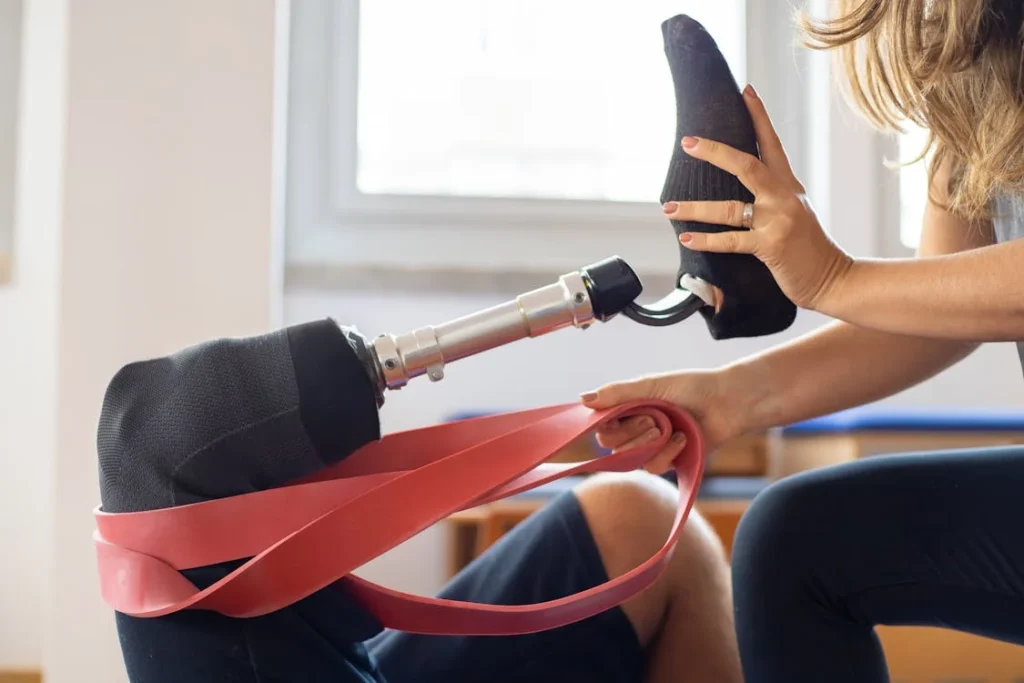
Adapting to Life with a Partial Foot Prosthesis
Adjusting to a partial foot prosthesis is a journey that involves learning how to move comfortably and confidently. The body needs time to adapt, and users often go through a period of training and rehabilitation to regain their mobility.
While the transition may feel challenging at first, the right prosthetic, combined with proper guidance, can make a significant difference in restoring independence.
The First Steps: Getting Used to a Prosthesis
The initial experience of wearing a partial foot prosthetic can feel unusual. Since the prosthetic replaces a missing part of the foot, users must learn how to distribute their weight evenly while walking.
At first, the prosthetic may feel stiff, and the foot may be sensitive to pressure. This is a normal part of the adaptation process.
Physical therapy plays a crucial role during this stage. Therapists guide users through exercises that strengthen the foot and leg muscles, helping them adjust to the new way of walking.
Simple exercises like shifting weight from side to side, practicing stepping motions, and walking on different surfaces help build confidence and improve balance.
For some users, it takes time to develop trust in their prosthesis. The foot is responsible for absorbing impact and keeping the body steady, so adjusting to a new support system can feel unfamiliar.
However, with consistent practice, most people regain a sense of natural movement and stability.
Walking with Confidence and Stability
Once users become comfortable wearing their prosthesis, they can focus on refining their walking pattern. The goal is to walk with a smooth, even stride without putting excess pressure on one side of the body.
A common challenge is avoiding an uneven gait, where the body leans more toward the unaffected foot. This imbalance can lead to discomfort and strain in the hips and back over time.
Proper footwear plays an important role in this stage. The right shoe provides additional support and helps the prosthesis function more effectively.
Many prosthetic users find that athletic shoes with good cushioning and a firm sole offer the best combination of comfort and stability. Some may require custom footwear to accommodate the prosthesis, ensuring a snug and supportive fit.
Walking on different terrains is another milestone in the adaptation process. Flat surfaces like indoor floors are the easiest to navigate, but real-life environments include grass, slopes, stairs, and uneven sidewalks.
Practicing on these surfaces helps users develop confidence in their prosthetic’s ability to handle various conditions. Over time, many users find that they can return to normal activities without discomfort.
Returning to Daily Activities and Hobbies
A key goal of using a partial foot prosthesis is enabling users to return to their favorite activities. Whether it’s walking long distances, standing for extended periods, or engaging in sports, a well-designed prosthetic helps restore the ability to move freely.
For individuals with active lifestyles, some prosthetic designs include energy-returning features that absorb shock and provide extra push-off during movement. This makes activities like running or hiking more comfortable.
Swimming is also possible with certain water-resistant prosthetics, allowing users to participate in water-based exercises without limitations.
Many people worry that using a prosthetic will change their daily routine, but with proper adjustment and rehabilitation, most users find that they can continue working, traveling, and engaging in hobbies just as they did before.
The key is patience and persistence during the adaptation phase.
Emotional and Psychological Adaptation
Beyond the physical adjustments, adapting to a prosthesis also involves emotional and psychological changes. It is normal to feel self-conscious or unsure at first.
Some individuals worry about how others will react or whether they will ever feel “normal” again. These feelings are valid, but they often fade as users become more comfortable with their prosthetic.
Support from family, friends, and healthcare professionals makes a big difference. Connecting with others who have gone through similar experiences can also be encouraging.
Many prosthetic users find strength in sharing their stories and learning from others who have successfully adapted to life with a prosthetic.
At Robobionics, we believe in empowering our users through innovative prosthetic solutions and ongoing support. Our team is dedicated to helping individuals regain confidence, mobility, and independence with high-quality prosthetics designed for everyday life.
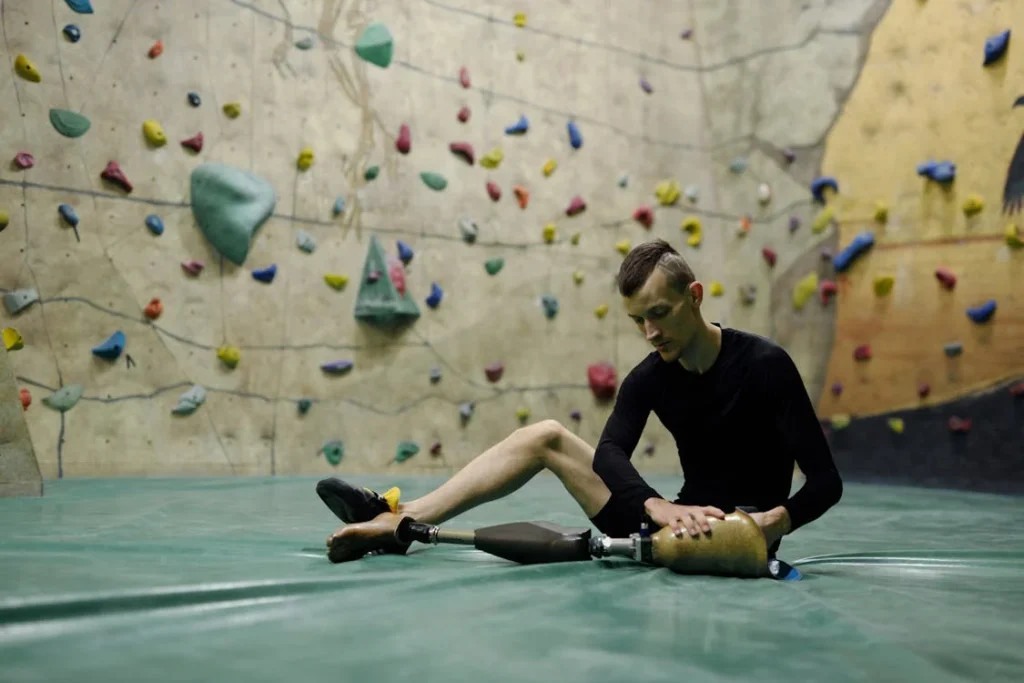
The Role of Rehabilitation in Restoring Mobility
Rehabilitation is a critical step in adapting to a partial foot prosthesis. It helps users strengthen their muscles, improve their balance, and regain confidence in walking.
Without proper rehabilitation, many users may struggle with discomfort, uneven gait, or fatigue. A structured rehabilitation plan ensures that the transition to using a prosthetic is smooth and effective.
Strengthening Muscles for Better Support
When part of the foot is missing, the remaining muscles and joints must work harder to maintain stability. The calf, ankle, and even the knee play a bigger role in supporting body weight and absorbing impact.
If these muscles are weak, walking can become tiring and unsteady. Strength training exercises help reinforce these muscles, reducing the risk of strain or injury.
Rehabilitation exercises often start with simple movements, such as toe raises, ankle rolls, and resistance band exercises. These movements help restore flexibility and strength to the foot and lower leg.
Over time, users progress to more advanced exercises, such as step-ups and controlled walking drills, which improve endurance and coordination.
Balance Training for Stability
Balance is one of the biggest challenges for people using a partial foot prosthesis. Since the foot naturally adjusts to different surfaces, losing part of it changes how weight is distributed.
Without proper balance training, users may feel unstable, especially on uneven ground.
Balance exercises help users regain confidence in their footing. Simple activities like standing on one leg, shifting weight from side to side, and practicing controlled movements improve stability.
Some users may start with support, such as holding onto parallel bars or a stable surface, before progressing to independent movement.
For individuals with more advanced needs, balance boards and proprioception exercises train the body to react quickly to changes in terrain. This prepares users for real-world environments, where surfaces are often unpredictable.
Learning a Natural Walking Pattern
Walking with a prosthetic requires some adjustments to develop a natural gait. Without proper training, users may unconsciously change their walking style, which can lead to discomfort in the hips, knees, and lower back.
Gait training helps ensure that users distribute their weight evenly and move efficiently.
A physical therapist will guide users through different walking drills, starting with slow, controlled steps and gradually increasing speed and complexity.
Some exercises focus on heel-to-toe movement, while others train users to push off the ground properly, mimicking the function of a natural foot.
For users with more advanced prosthetic designs, such as those with energy-returning features, gait training ensures that they take full advantage of the prosthetic’s benefits. The goal is to make walking feel as effortless and natural as possible.
The Importance of Gamified Rehabilitation
Traditional rehabilitation exercises can sometimes feel repetitive or unmotivating. To make the process more engaging, gamified rehabilitation programs use interactive exercises that encourage consistent practice.
These programs include virtual challenges, step-tracking apps, and reward-based progress tracking to make therapy more enjoyable.
At Robobionics, we incorporate gamified rehabilitation to help users stay committed to their recovery journey. By turning rehabilitation into an interactive experience, users are more likely to stay consistent with their exercises, leading to faster adaptation and improved mobility.
Returning to Everyday Activities with Confidence
Rehabilitation does not just focus on walking; it also prepares users for everyday activities. Simple tasks like climbing stairs, getting in and out of a car, or standing for long periods require proper technique and endurance.
Rehabilitation programs include real-life scenarios to help users transition back to normal life with ease.
Many users find that after completing their rehabilitation program, they feel more confident in their movements. Whether it’s walking to the store, traveling, or participating in social activities, the right rehabilitation plan ensures that users regain their independence and lead an active lifestyle.
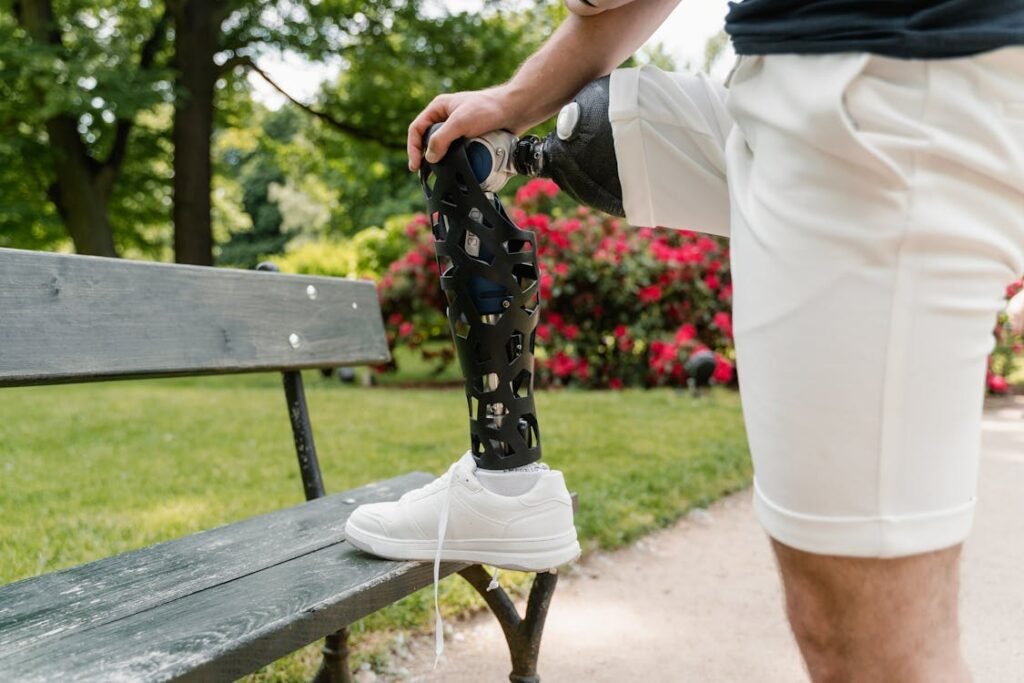
Choosing the Right Partial Foot Prosthesis
Selecting the right partial foot prosthesis is essential for restoring mobility, comfort, and long-term functionality. Since every amputation is unique, the prosthetic must be customized to meet the specific needs of the user.
The right choice depends on factors such as the level of amputation, lifestyle, and personal comfort preferences. A well-fitted prosthesis not only improves walking but also prevents complications like pain, pressure sores, and muscle strain.
Understanding Different Types of Partial Foot Prosthetics
Partial foot prosthetics come in various designs depending on how much of the foot is missing. A toe filler prosthesis is the simplest type, used when only one or more toes are missing.
It helps balance weight distribution and prevents the remaining toes from shifting out of position. A midfoot prosthesis replaces a larger section of the foot and provides additional support for stability and movement.
A prosthesis that extends above the ankle may be required for more extensive amputations to enhance overall balance.
The material and structure of the prosthesis play a big role in how it functions. Silicone prosthetics offer flexibility and a natural look, making them comfortable for daily use.
Carbon fiber designs provide strength and energy return, helping users walk more efficiently. The best choice depends on the user’s activity level and personal preference.
The Importance of a Proper Fit
A prosthetic that fits well feels like a natural extension of the body, while a poorly fitted one can cause discomfort and mobility issues. The prosthetist takes detailed measurements to ensure the prosthesis fits securely without causing pressure points.
The residual foot should be evenly supported to prevent uneven weight distribution. If the prosthesis is too tight, it can cause circulation problems, while a loose fit can lead to skin irritation and instability.
Since the shape of the foot may change over time, occasional adjustments are necessary to maintain comfort and functionality.
Balancing Aesthetics and Functionality
Many users want a prosthetic that looks natural while also functioning well. Advanced prosthetic designs use materials that match skin tone and texture, creating a realistic appearance.
However, appearance should not come at the cost of comfort and efficiency.
Some users prefer a simple functional prosthetic that provides maximum support, while others choose a more detailed cosmetic prosthesis.
The best option depends on lifestyle needs, whether the focus is on walking long distances, engaging in sports, or simply having a comfortable prosthetic for everyday activities.
Customization for Lifestyle and Activity Level
People with an active lifestyle may require a prosthesis that offers additional durability and shock absorption. Athletes and physically active individuals benefit from prosthetics with reinforced soles and energy-storing properties.
For users who stand for long periods, extra cushioning helps reduce foot fatigue.
For those who need a prosthesis mainly for walking and daily tasks, lightweight materials and comfort-focused designs are ideal. The prosthetist works closely with the user to determine the right balance between function, comfort, and appearance.
Working with a Professional Prosthetist
Choosing the right prosthetic is not a one-size-fits-all process. A skilled prosthetist ensures that every aspect of the prosthesis is tailored to the user’s needs.
At Robobionics, we take a personalized approach to prosthetic design, ensuring that every user receives the best solution for their mobility and comfort.
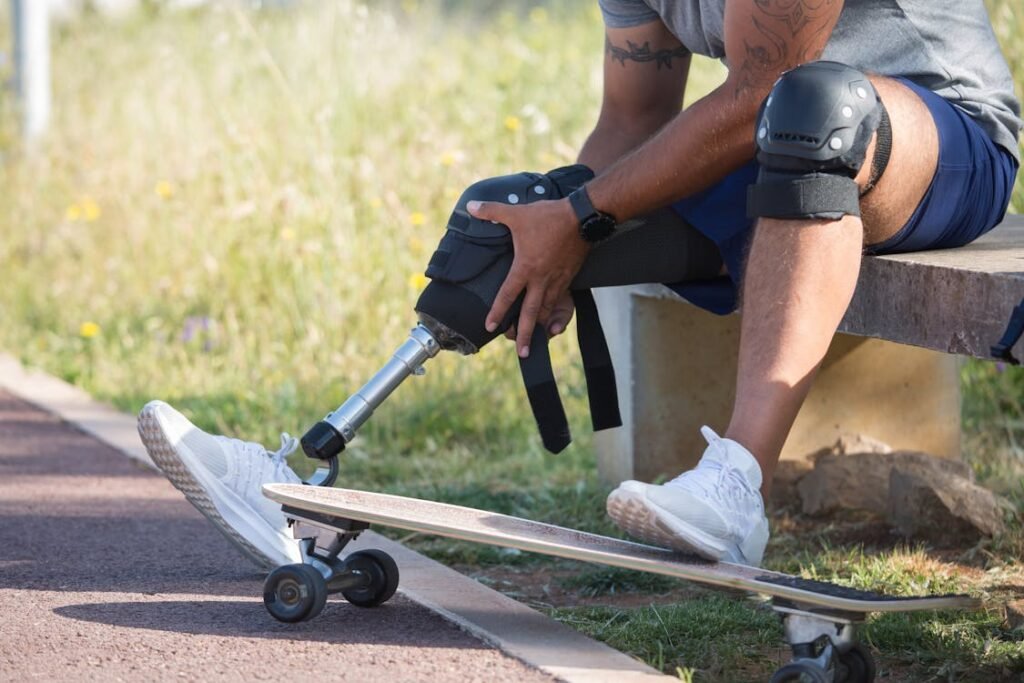
Long-Term Care and Maintenance of Partial Foot Prosthetics
A partial foot prosthesis is an investment in mobility and quality of life, and taking proper care of it ensures it remains comfortable and functional for years. Regular maintenance not only extends the lifespan of the prosthesis but also prevents complications like skin irritation, pressure sores, and discomfort.
A well-maintained prosthesis feels better, functions smoothly, and helps users stay active without unnecessary strain or pain.
Daily Cleaning and Hygiene
Keeping the prosthetic clean is essential, as it comes into direct contact with the skin. Sweat, dust, and bacteria can accumulate over time, leading to irritation and odors.
Cleaning the prosthesis daily with mild soap and warm water helps remove dirt and prevents skin infections. For prosthetics with liners or inserts, these should be washed separately and fully dried before use.
Moisture can be a concern, especially in humid climates or for users who wear their prosthetic for long hours. Using moisture-wicking socks or liners can help keep the residual foot dry and reduce friction.
Checking for signs of redness or irritation at the end of each day ensures that the prosthesis is not causing pressure-related discomfort.
Monitoring Fit and Comfort
The shape of the residual foot can change over time due to weight fluctuations, muscle adjustments, or swelling. Even a small change in size can affect how the prosthetic fits.
A prosthesis that was once comfortable may start to feel tight, loose, or cause pressure points.
Regular check-ups with a prosthetist help ensure that the prosthesis continues to fit well. If there is any discomfort, minor adjustments can be made to improve alignment and support.
Ignoring fit issues can lead to posture problems, joint strain, and reduced mobility, so it is important to address them early.
Checking for Wear and Tear
Over time, prosthetic materials wear down due to daily use. The bottom surface of the prosthesis, especially for designs that provide extra support, can experience gradual thinning.
Cracks, worn-out padding, or loose components should be inspected regularly to prevent sudden breakage.
For users with prosthetics that include flexible or energy-returning features, ensuring that the structure remains intact is important for smooth movement. Any unusual noises, stiffness, or loss of function may indicate that the prosthetic needs servicing.
Adjusting to Changes in Activity Level
Lifestyle changes can impact prosthetic needs. If a user becomes more active, engages in new physical activities, or spends more time on their feet, they may require modifications to their prosthesis.
Some users find that as they regain confidence in their movement, they want a more advanced or sport-friendly prosthesis.
A prosthetist can assess whether a new design or an upgraded material would better suit the user’s needs. Some individuals may need additional cushioning for increased standing time, while others may benefit from a more responsive prosthetic for activities like jogging or hiking.
When to Seek Professional Assistance
If a prosthesis begins causing discomfort, does not fit as securely as before, or shows visible damage, it is important to consult a prosthetist. Early intervention prevents complications and ensures that users continue to enjoy full mobility.
At Robobionics, we provide ongoing support to help users maintain their prosthetics in top condition. Whether it is a simple adjustment, a material upgrade, or guidance on daily care, we ensure that every user gets the best possible experience with their prosthesis.

The Psychological and Emotional Impact of Using a Partial Foot Prosthesis
Adjusting to life with a partial foot prosthesis is not just about regaining physical mobility—it is also a deeply personal and emotional journey. Losing a part of the foot can affect confidence, self-image, and daily interactions.
While prosthetics restore function, they also play a vital role in helping users regain a sense of normalcy and independence. Understanding the emotional impact of using a prosthesis and finding ways to build confidence can make the adjustment process smoother and more empowering.
Overcoming Self-Consciousness
Many individuals experience self-consciousness when they first start using a prosthesis. There may be concerns about how others perceive them, whether the prosthesis will be noticeable, or if they will ever feel “normal” again.
These feelings are completely natural and often fade with time and experience.
One of the most effective ways to overcome self-consciousness is to focus on the benefits of the prosthesis. Instead of viewing it as a sign of loss, many users find empowerment in knowing that it helps them move freely again.
Surrounding oneself with a supportive network of family, friends, or fellow prosthetic users can also help ease any worries.
For those who are concerned about aesthetics, advancements in prosthetic technology offer natural-looking designs that match skin tone and texture. Custom prosthetics can be created to blend seamlessly with the remaining foot, allowing users to feel more at ease in social settings.
Building Confidence in Movement
Fear of falling or struggling with movement is another common emotional hurdle. Many individuals worry that their prosthesis will not feel stable enough or that they will never walk the way they once did.
Confidence in movement comes with time, practice, and the right support.
Rehabilitation plays a key role in helping users trust their prosthesis. By working with a physical therapist or practicing movement exercises at home, users gradually build muscle strength and balance.
The more comfortable they become with their prosthesis, the more confident they feel in everyday activities.
Some individuals find that setting small goals—such as walking a certain distance without thinking about their prosthetic or standing for longer periods—helps them track their progress.
Celebrating these small victories boosts confidence and reinforces the idea that they are capable of adapting.
Navigating Social Situations
Interacting with others after getting a prosthesis can feel different at first. Some people may be curious and ask questions, while others may not even notice.
Learning how to navigate social situations with confidence can make a big difference in how users feel about their prosthetic experience.
Some users prefer to openly talk about their prosthesis, seeing it as an opportunity to educate others. Others may choose to keep the focus away from their prosthetic and simply go about their normal routine.
There is no right or wrong way to approach these situations—what matters is that the user feels comfortable and in control of how they engage with others.
Having a prepared response to common questions can help ease any awkwardness. Something as simple as, “I use a prosthetic to help me walk better,” can be enough to acknowledge curiosity while moving the conversation forward.
Over time, most users find that their prosthetic becomes just another part of who they are, rather than something that defines them.
Emotional Resilience and Mental Well-Being
Adapting to a prosthesis can bring moments of frustration, but it is important to remember that progress is a journey. Some days will feel easier than others, and setbacks are a normal part of learning.
Developing emotional resilience helps users navigate these ups and downs with a positive mindset.
Practicing patience and self-compassion is key. Comparing oneself to others or expecting immediate perfection can lead to unnecessary stress.
Instead, focusing on individual progress and recognizing personal achievements makes the process more rewarding.
Support groups, counseling, and connecting with others who have similar experiences can also be valuable. Speaking with people who have successfully adapted to their prosthesis provides reassurance and motivation.
At Robobionics, we believe that emotional well-being is just as important as physical mobility, and we encourage users to seek out the support they need.
Embracing a New Chapter
A partial foot prosthesis is not just a medical device—it is a tool that allows users to regain their freedom, independence, and confidence. While the journey of adaptation comes with challenges, it also brings opportunities for growth and resilience.
Many individuals discover a newfound appreciation for their strength and adaptability as they learn to navigate life with their prosthetic.
Rather than seeing it as a limitation, many users embrace their prosthesis as part of their unique journey. With the right mindset, support, and dedication, a partial foot prosthetic can become more than just a functional aid—it can be a symbol of perseverance and empowerment.
Conclusion
A partial foot prosthesis does more than replace what is lost—it restores balance, mobility, and confidence. By providing support and stability, it allows users to walk naturally, reduce strain on their bodies, and regain independence in daily life. The journey of adapting to a prosthesis involves physical adjustments, emotional resilience, and consistent rehabilitation, but with the right prosthetic and proper guidance, users can lead active and fulfilling lives.
Choosing the right prosthetic is crucial for comfort and functionality. A well-fitted prosthesis improves movement, prevents complications, and enhances quality of life. Regular maintenance ensures long-term comfort, while rehabilitation programs help users develop strength and confidence in their mobility.
Beyond physical recovery, the emotional journey of using a prosthetic is equally important. Overcoming self-consciousness, building trust in movement, and navigating social situations all play a role in helping users embrace their prosthesis as a part of their identity.
At Robobionics, we are committed to providing high-quality, customized prosthetics that empower users to move with ease and confidence. If you or a loved one are exploring prosthetic options, contact us today to take the next step toward restoring mobility and independence.



